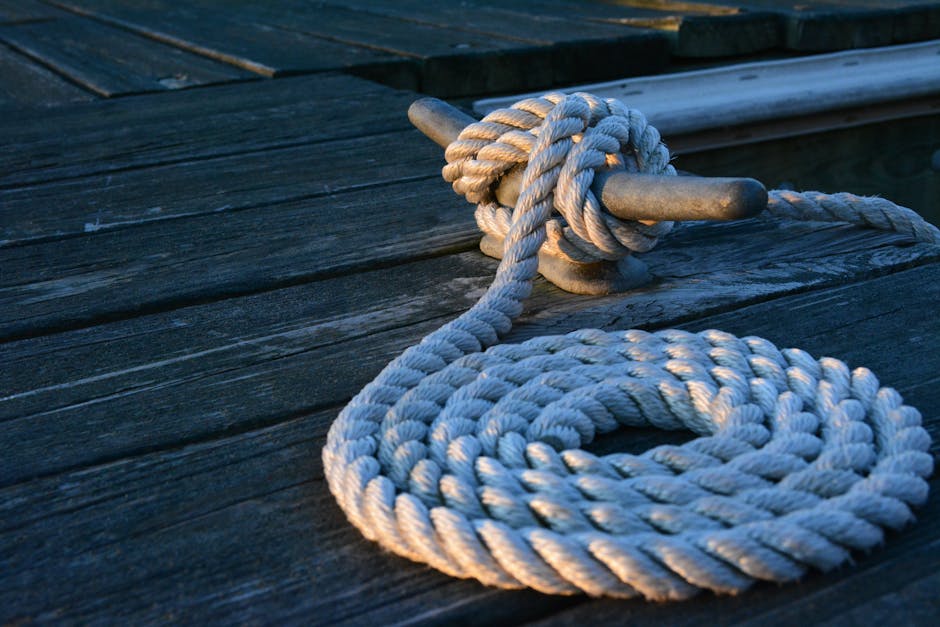Sailing Knots: The Art and Science of Seamanship
Sailing knots are not just simple ties used to secure ropes and lines on a boat; they are an essential element of seamanship, vital for safety, efficiency, and successful navigation on the open water. Whether you are a seasoned sailor or a novice enthusiast, understanding the various types of sailing knots and their applications can make a significant difference in your sailing experience.
In this comprehensive guide, we will delve into the world of sailing knots, exploring their history, significance, and practical uses. From basic knots to advanced techniques, we will unravel the intricacies of knot tying and how it impacts every aspect of sailing. So, grab a line and let’s set sail into the fascinating realm of sailing knots.
The Origins of Sailing Knots
Sailing knots have a long and storied history, dating back to the early days of seafaring. The ancient mariners relied on intricate knotting techniques to secure sails, rigging, and other essential components of their vessels. Over time, these knots evolved and adapted, becoming indispensable tools for sailors around the world.
One of the earliest known knotting systems is the Ashley Book of Knots, a comprehensive reference manual compiled by Clifford W. Ashley in the early 20th century. This iconic book contains detailed illustrations and instructions for over 3,900 different knots, including many that are still commonly used in sailing today.
The Anatomy of a Knot
Before we delve into specific types of sailing knots, let’s first understand the basic components of a knot. A knot consists of two main parts: the standing end and the working end. The standing end is the part of the rope that is not actively being used to tie the knot, while the working end is the part that is manipulated to create the knot.
Additionally, knots can be classified into different categories based on their function. Some knots are used to secure two ropes together, while others are designed to create loops, bends, or hitches. Each type of knot serves a specific purpose and requires a unique technique to tie effectively.
Types of Sailing Knots
There are countless types of sailing knots, each with its own set of characteristics and applications. Here are some of the most common sailing knots that every sailor should be familiar with:
1. Figure Eight Knot
The figure eight knot is a simple and effective stopper knot that is commonly used to prevent a rope from slipping through a fitting or block. It is easy to tie and untie, making it a versatile knot for various applications on a boat.

2. Bowline Knot
The bowline knot is often referred to as the “king of knots” due to its strength and reliability. It creates a secure loop at the end of a rope that will not slip or loosen under tension. The bowline is an essential knot for many sailing tasks, such as securing a line to a cleat or creating a fixed loop in a halyard.

3. Clove Hitch
The clove hitch is a versatile knot that is used to secure a line to a post, pole, or other object. It can be easily adjusted and untied, making it ideal for temporary fastenings. The clove hitch is a common knot in sailing, especially when docking or mooring a boat.

4. Sheet Bend
The sheet bend is a reliable knot for joining two ropes of different diameters or materials. It creates a strong and secure connection that will not slip under tension. The sheet bend is a valuable knot for splicing lines together or extending the reach of a rope.

Advanced Knot Tying Techniques
While the basic sailing knots are essential for everyday tasks onboard a boat, there are also more advanced knot tying techniques that can be useful in specific situations. These techniques require a higher level of skill and practice but can be invaluable for experienced sailors.
1. Double Bowline
The double bowline is a variation of the standard bowline knot that creates an additional loop for added security. It is commonly used in rescue situations or when a higher level of strength is required. The double bowline is a challenging knot to master but is a valuable skill for any sailor.
2. Rolling Hitch
The rolling hitch is a friction hitch that is used to attach a rope to another rope or object under tension. It can be easily adjusted and released, making it ideal for temporary fastenings or emergency situations. The rolling hitch is a versatile knot that can be used in a variety of sailing tasks.
3. Monkey’s Fist
The monkey’s fist is a decorative knot that is often used as a heaving line weight or as a handle for a heaving line. It consists of a series of wraps around a core, creating a dense and heavy knot that can be thrown with accuracy. The monkey’s fist is a challenging knot to tie but is a valuable addition to any sailor’s repertoire.
Expert Opinions: The Importance of Sailing Knots
We reached out to expert sailors and maritime enthusiasts to gather their insights on the importance of sailing knots in modern seamanship. Here’s what they had to say:
“Sailing knots are the backbone of seamanship, essential for safety and efficiency on the water. Knowing how to tie the right knot for the right situation can make all the difference in a successful voyage.” – Captain Sarah Johnson, Master Mariner
“As a sailing instructor, I see firsthand the impact that proper knot tying skills can have on my students’ confidence and ability to navigate challenging conditions. Sailing knots are more than just practical tools; they are a reflection of a sailor’s knowledge and experience.” – James Smith, Sailing Instructor
Common Misconceptions about Sailing Knots
Despite their importance, sailing knots are often misunderstood or overlooked by novice sailors. Here are some common misconceptions about sailing knots:
1. Knots are only for experienced sailors.
While advanced knot tying techniques may require practice and skill, basic sailing knots are simple to learn and can be mastered by sailors of all levels. With patience and dedication, even novice enthusiasts can become proficient in knot tying.
2. One knot fits all situations.
Not all sailing knots are created equal, and each knot has a specific purpose and application. It is essential to understand the characteristics of each knot and when to use them to ensure safety and efficiency onboard a boat.
FAQs about Sailing Knots
Here are some frequently asked questions about sailing knots:
1. Which sailing knot is the most versatile?
The bowline knot is widely regarded as one of the most versatile and reliable sailing knots due to its strength and stability. It can be used in a variety of situations, from securing a line to creating a loop in a halyard.
2. How can I improve my knot tying skills?
Practice is key to improving your knot tying skills. Start with the basic knots and gradually progress to more advanced techniques. There are also plenty of online resources, books, and classes available to help you hone your knot tying abilities.
To Wrap Things Up
Sailing knots are an essential aspect of seamanship, offering practical solutions to a wide range of challenges faced by sailors. Whether you are securing a line, creating a loop, or joining two ropes together, knowing the right knot for the right situation can make a significant difference in your sailing experience.
By mastering the art of knot tying and understanding the importance of sailing knots, you can enhance your safety, efficiency, and enjoyment on the water. So, next time you set sail, remember the timeless wisdom of the ancient mariners: “Knots tied at sea will hold the key.”



